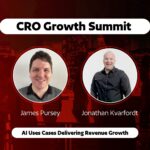
Churn – Building the Plane While It Was Flying

Building the Plane While It Was Flying: An OB Lens On A Season Of Churn
I stepped into a new senior role at a global services firm just as client churn climbed and customer experience slipped. There was no pause button. I had to diagnose the problem and act at the same time, essentially building the plane while it was flying. I did not have the vocabulary of Organizational Behavior then, yet later I realized that much of what worked mapped cleanly to the Basic OB Model and to a classic sequence for leading change.
What I Saw Then
From the ground, the picture looked like this. Teams in multiple regions, fast growth, uneven outcomes. Responsibilities overlapped, handoffs were fuzzy, and leaders were stretched. Clients noticed the variability first. My job was to stabilize delivery and bend churn in the right direction.
Without a formal framework, I listened hard, walked the process, and ran small experiments. I watched which changes reduced friction and which ones did not. I looked for patterns that showed up across accounts, not just in one team.
What The Basic OB Model Helps Me See Now
Years later, reading Robbins and Judge gave me a clearer map. The Basic OB Model organizes reality into inputs, processes, and outcomes at three levels. Seen through that lens, the season makes more sense.
Inputs.
At the individual level, diverse backgrounds and personalities produced idea variety, yet early trust was fragile because norms were implicit. At the group level, team structure had not kept up with hiring. Decision rights were unclear and work bounced between groups. At the organizational level, structure rewarded local autonomy and speed, while integration mechanisms were thin. These inputs made variable results likely (Robbins and Judge, 2023).
Processes.
At the individual level, motivation rose when goals were specific, when people had real autonomy, and when feedback arrived quickly. At the group level, communication was mostly reactive. Conflict drifted from tasks to relationships because teams lacked routines for coordination and learning. At the organizational level, HR practices and playbooks varied by region. That meant every improvement had to be rediscovered rather than reused (Robbins and Judge, 2023).
Outcomes.
Individuals carried more stress and gave less discretionary effort. Groups struggled to coordinate. At the organizational level, productivity wobbled and churn rose. None of this was mysterious once the inputs and processes were visible.
The Midseason Inflection
Midway through, I picked up Kotter’s Leading Change. It did two important things. It gave me a sequence and it made me watch for common failure patterns. I reframed the work around a simple arc.
- Create urgency. I put churn and variability on one page so everyone saw the same problem. Urgency turned concern into shared focus (Kotter, 1995).
- Form a guiding coalition. I pulled leaders from each part of the client journey into one group and gave them ownership of the fix. This coalition modeled the collaboration we needed across the system (Kotter, 1995).
- Craft and communicate a clear vision. We named a short, client value-centered vision for reliable delivery and repeated it everywhere, then translated it into a few visible practices that anyone could observe (Kotter, 1995).
- Remove obstacles. We merged handoffs, retired duplicate tools, and clarified decision rights. People could do the right thing with less friction (Kotter, 1995).
- Generate short-term wins. We focused on a handful of high-risk accounts, measured weekly, and made the wins public. Confidence rose, resistance fell (Kotter, 1995).
- Consolidate and anchor. We extended the playbook, tied reviews and promotions to the new way of working, and folded the routines into onboarding so they would stick (Kotter, 1995).
Kotter did not replace the OB Model. The model showed what to change, the sequence showed how to make it take.
The Four Pillars I Put In Place
While this choreography unfolded, I focused on the execution of four moves that lined up with OB research.
- Standardize the client journey. We mapped the path from promise to proof to renewal, then wrote a simple playbook and aligned the tools. Clarity improved perception and decision making, and it raised perceptions of fairness, which helps motivation and cooperation (Robbins and Judge, 2023).
- Set shared goals with fast feedback. We chose a small set of cross-functional metrics, made them specific and challenging, and reviewed them every week. Goal clarity and timely feedback improved effort and learning (Robbins and Judge, 2023).
- Develop leaders and teams. We clarified what managers do, added coaching, and trained leaders to reframe conflict toward tasks. Teams adopted brief daily check ins and short retrospectives. Psychological safety improved, so did handoffs (Robbins and Judge, 2023).
- Unify people systems. We tightened selection for role fit, streamlined onboarding, and aligned recognition with the new routines. The culture began to echo the structure, not fight it (Robbins and Judge, 2023).
Results While The Plane Was In The Air
Leading indicators moved first. Process adherence grew, cycle times shortened, and teams spent more time on task conflict and less on personal friction. Lagging indicators followed. Renewals improved, and churn started to fall. The trend line went upwards and to the right. These outcomes match the model’s prediction that better-aligned inputs and stronger processes produce better individual, group, and organizational results, and they match Kotter’s argument that early wins create momentum that leaders can consolidate (Robbins and Judge, 2023; Kotter, 1995).
What I Would Do Differently
Clarity comes with distance. I see three places where I would act sooner.
- Fix system constraints before pushing output. Early on I asked for more results before addressing structure and culture. Next time I would sequence structure first, then scale effort (Robbins and Judge, 2023).
- Start leadership development on day one. Coaching began late, which left pockets of variability. I would now define a simple leadership spine and link it to selection, development, and rewards from the start (Robbins and Judge, 2023).
- Anchor more explicitly. We linked performance and promotions to the new routines, yet we did not fully embed them into every talent process. I would build stronger anchors to reduce backsliding risk (Kotter, 1995).
A Playbook For Readers
If you are entering a similar season, begin with an OB map. Write down the critical inputs at the individual, group, and organizational levels. Specify the processes that convert those inputs into action. Choose a few outcomes that matter. Then run the change in a clear sequence. Create urgency, form a coalition, tell a simple story, remove friction, stage visible wins, consolidate, and anchor. The map shows where to work. The sequence helps the work hold.
Closing Thought
In the moment, the work felt like improvisation. In hindsight, it was a case study in aligning inputs and processes to change outcomes, and in using a disciplined change sequence so the gains would last. If I had started the season with Robbins and Judge in one hand and Kotter in the other, I would have made fewer detours and the gains would have arrived sooner. The lesson still stands. Build the plane if you must, keep it flying, and use the model and the sequence to make sure the flight path stays steady and climbs.
References
Kotter, J. P. (1995). Leading change: Why transformation efforts fail. Harvard Business Review, 73(2), 59–67.
Robbins, S. P., & Judge, T. A. (2023). Organizational behavior (19th ed.). Pearson.































